Snakes are misunderstood animals — venomous snakes even more so. Some cultures revere them, while others fear and even hate them. Yet, snakes are as necessary to rodent control as bees are to flower pollination.
Although all snake species take a hit from fearful people, venomous snakes are killed at even higher rates. However, these legless reptiles want nothing to do with us and provide some of the best rodent control on the planet.
Vipers are diverse and highly adaptable.
This group of snakes is large and includes both vipers and pit vipers. They occur on nearly every continent and are wildly different in appearance. Some vipers live as far north as the 65th parallel in the Arctic Circle, while others make it as far south as the 45th parallel.
Vipers usually give birth — they don’t lay eggs.
Most vipers are ovoviviparous, meaning they give birth to babies, and many exhibit maternal care to some degree. In a surprising twist, some rattlesnake species are semi-social and seek out the same individuals to bask near for years.
All vipers have moveable fangs.
Part of the fear factor vipers carry is the rather large hypodermic needle-style fangs. These highly evolved snakes can inject massive venom doses but sometimes don’t.
Of the 200-plus snakes on the IUCN Redlist, about 20% are vipers.
The world’s viper population is only about 9% of all snake species, yet they seem over-represented on the IUCN Redlist. According to a 2016 study, “they currently comprise 20% of the 226 snakes listed as threatened on the IUCN Red List.”
It’s hard to quantify which vipers are the most endangered. However, we made a judgment call, based on known population numbers and overall threats. And, keep in mind, this list is by no means exhaustive. There are too many vipers either endangered or critically endangered to list them all here.
#20 West African Gaboon Viper

Slow-moving until it strikes, these snakes have some of the longest fangs of all vipers.
©jindrich_pavelka/Shutterstock.com
West African gaboon vipers (Bitis rhinoceros) look like scaly caterpillars as they move across roads and landscapes. However, their strike can be deadly.
Unfortunately, although they are docile as venomous snakes go, their ability to kill frightens people. So, these snakes are killed more often than they’re allowed to go free.
#19 Kenya Horned Viper

This strikingly beautiful snake is threatened by illegal poaching for the pet trade.
©reptiles4all/Shutterstock.com
The Kenya horned viper (Bitis worthingtoni) lives in a narrow strip of land in Kenya where it’s being pushed out of its native habitat. Its population is extremely fragmented because of development including intensive farming.
#18 Black-Headed Bushmaster
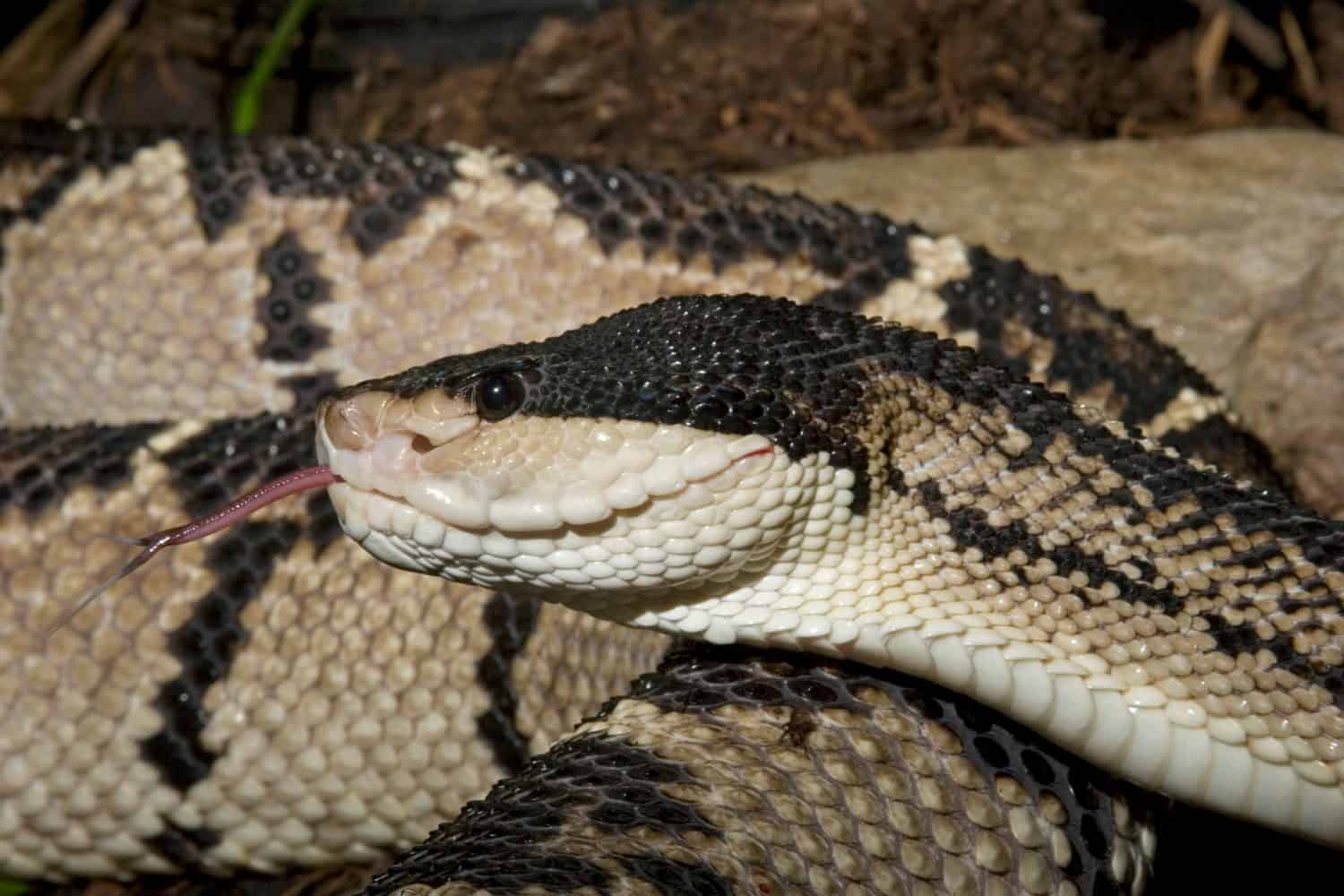
Still a bushmaster, but its distinctive black head sets it apart.
©Mark_Kostich/Shutterstock.com
These large Central American pit vipers are one of very few that lay eggs instead of giving birth. Their dorsal scales are keeled to the extreme and give the impression of dragon skin.
Black-headed bushmasters (Lachesis melanocephala) regularly grow over six feet long and only occur in a small area of Costa Rica, with a possible population in Panama. It is the rarest of the bushmasters and one of the most endangered vipers in the world.
#17 Southern Adder
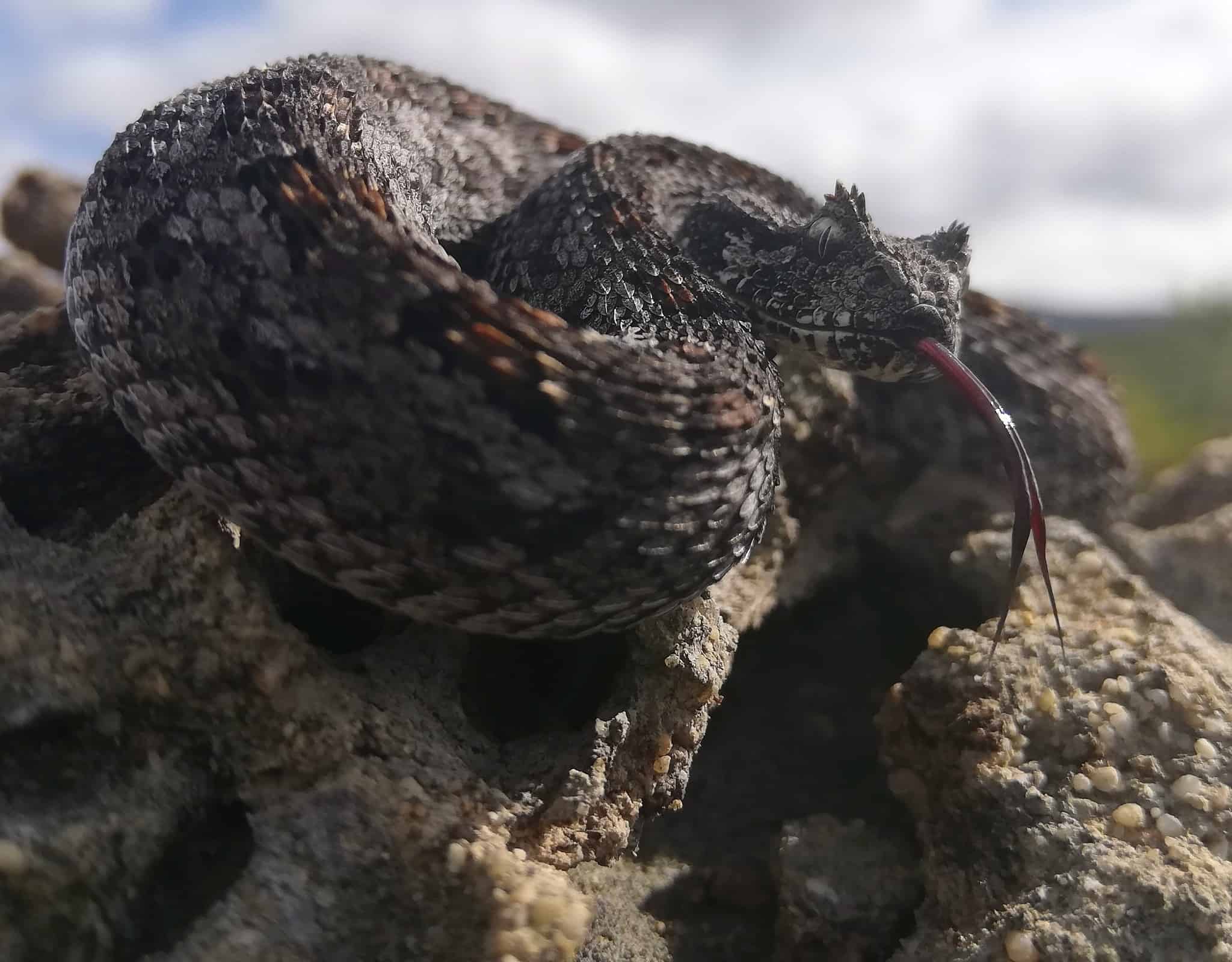
Southern adders are cousins to Gaboon vipers but only live in South
Africa
.
©Mike Fabricius, CC BY-SA 4.0 - License
Endemic to South Africa, the southern adder (Bitis armata) population is under threat by real estate development, but many locals also trap it for food. These snakes are under-researched and not much is known about them.
#16 Darevsky’s Viper

This small viper only grows to about 16.5 inches long.
©Dan_Koleska/Shutterstock.com
Darevsky’s viper (Vipera darevskyi) is native to the Dzavakhety Mountains in Turkey, Armenia, and possibly Georgia. It is rare and inhabits an area smaller than about 62 square miles. The viper also faces challenges from cattle grazing and farming, in addition to having its population fragmented.
#15 Wagner’s Viper

Common in the late 1990s, pet trade overcollection has damaged local populations.
©Matteo photos/Shutterstock.com
This mountain viper species lives in the mountains of eastern Turkey. The IUCN lists Wagner’s viper (Montivipera wagneri) as critically endangered because people took too many pregnant females out of the wild for the pet trade, leading to a dramatic drop in babies born.
#14 St. Lucia Fer-de-Lance
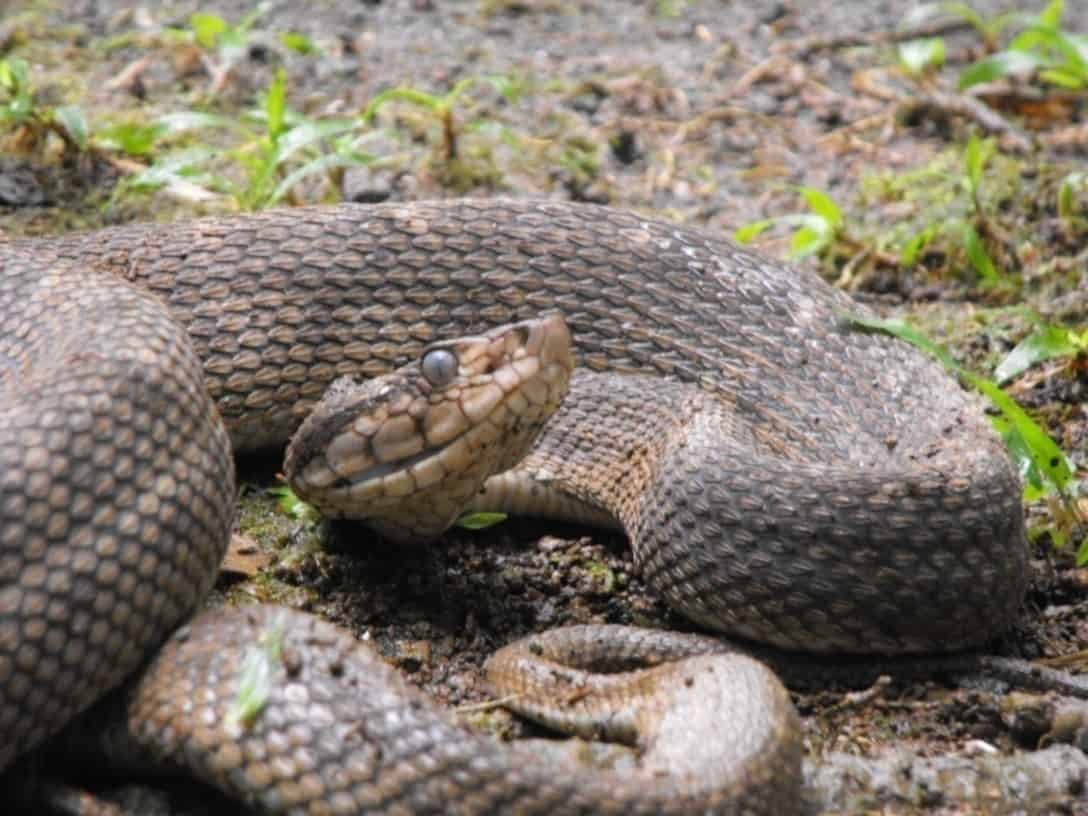
This snake’s cloudy blue eyes indicate it is preparing to shed its old skin.
©Katie Breach, CC BY-SA 3.0 - License
Endemic to St. Lucia Island in the Caribbean and rapidly losing habitat, the St. Lucia fer-de-lance (Bothrops caribbaeus) is nearly as rare as the Aruba rattlesnake. But unlike the Aruba rattlesnake, there aren’t several zoos with a pair in their collection.
The Kentucky Reptile Zoo has a few of these endangered snakes — the only legal St. Lucia fer-de-lances outside of St. Lucia. In October 2023, their females gave birth to two litters of babies. The zoo houses them as an insurance colony with the permission of the St. Lucia government.
#13 Tancitaran Dusky Rattlesnake
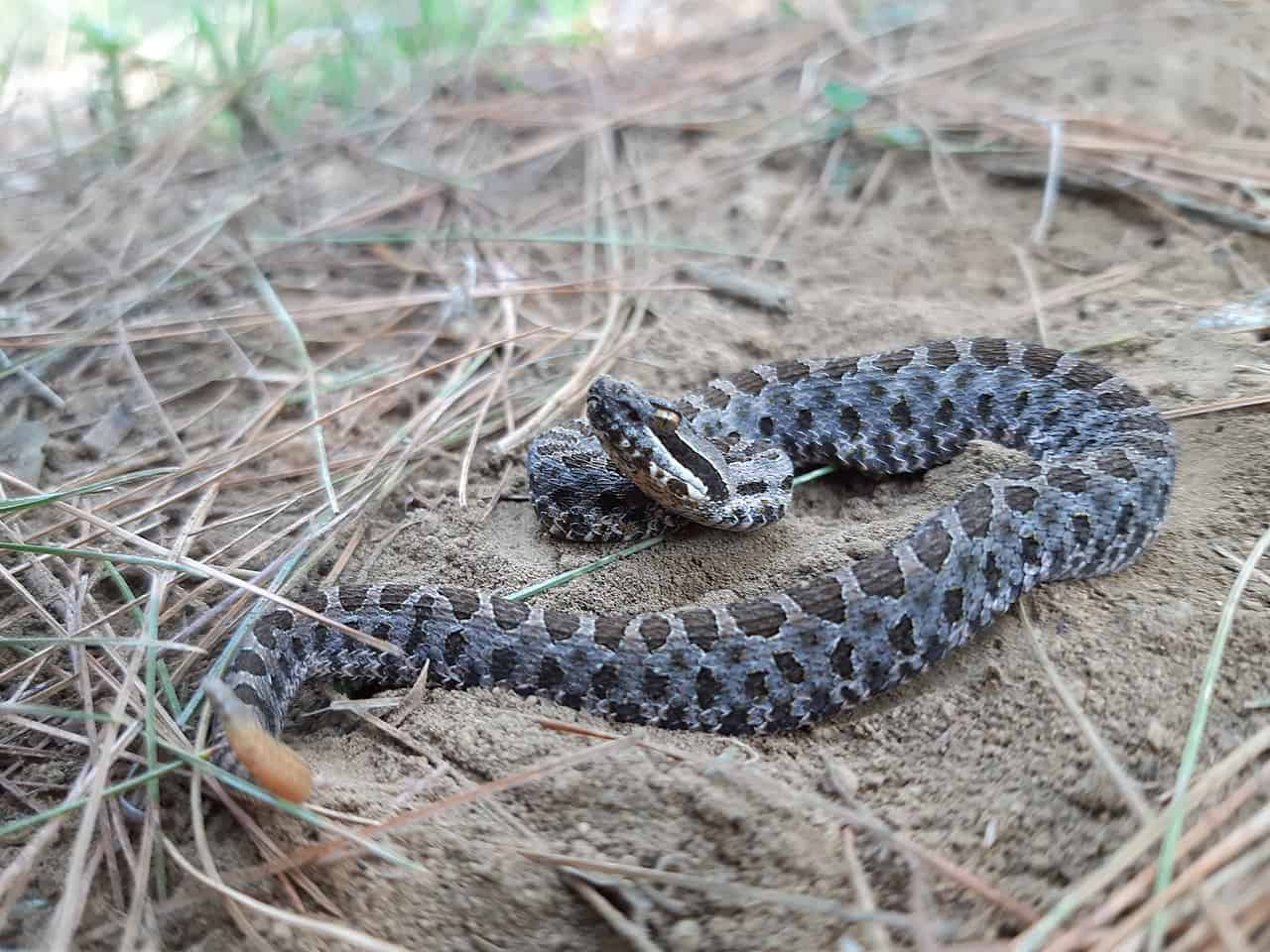
This endangered viper is native to west-central Mexico.
©Pillo Alcaraz / CC BY 4.0 - License
Found in a very small region of the Mexican states of Michoacan and Jalisco, the Tancitaran dusky rattlesnake (Crotalus pusillus) is one of the most endangered vipers. It lives at about 5,000 feet and its relative isolation and rarity put its future at risk.
#12 Tzotzil Montane Pit Viper
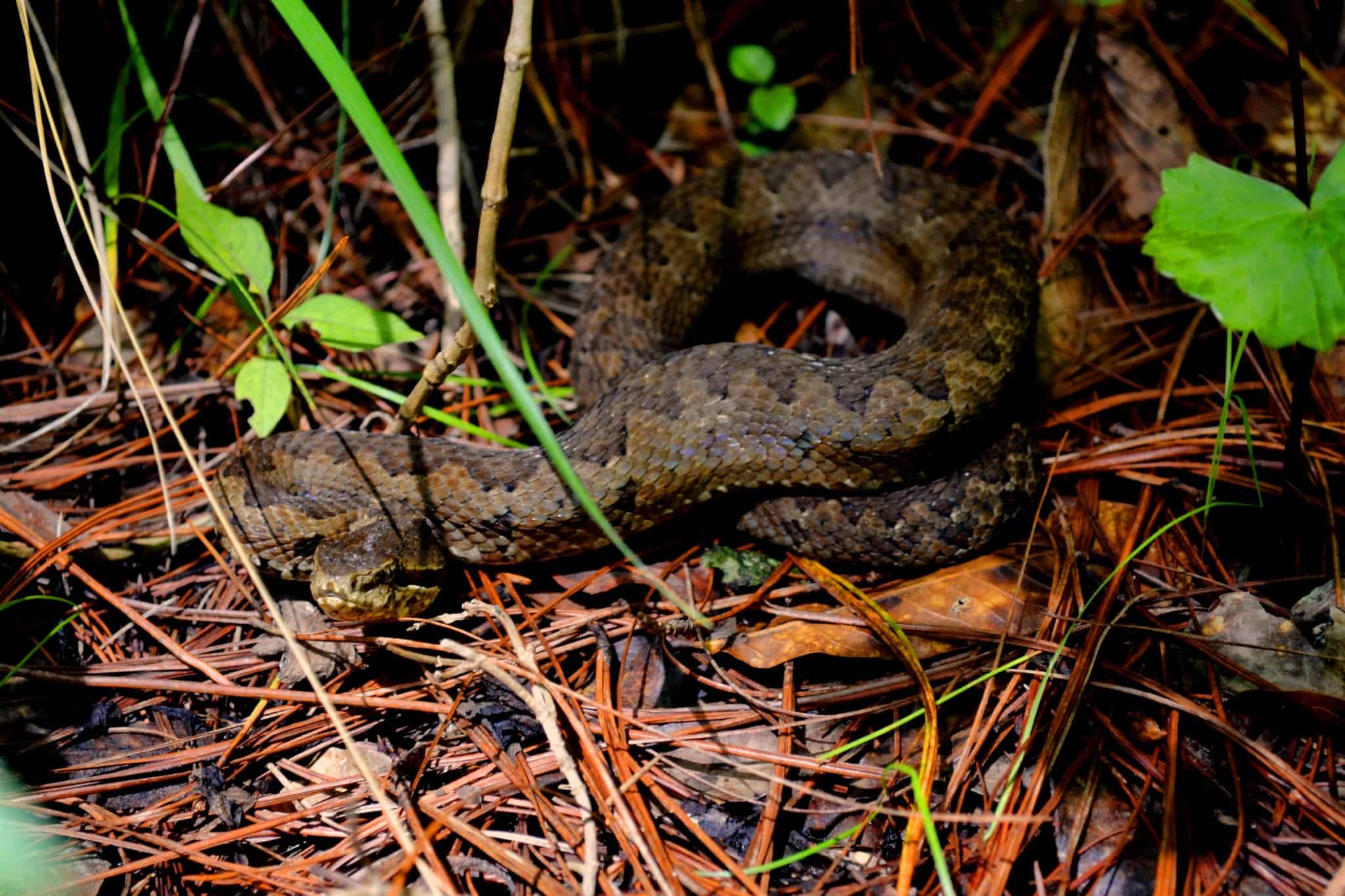
This mountain-loving snake is named for the Tzotzil people who share its home range.
©Daniel Pineda Vera, CC BY 4.0 - License
Habitat loss and fear kill most of these snakes. In their area, most of the people who encounter them kill them. The Tzotzil montane pit viper (Cerrophidion tzotzilorum) is native to the mountains of Chiapas and grows about 20 inches long.
#11 Lowlands Hump-Nosed Pit Viper

No one knows the exact population, but they are declining.
©Brecht Heusequin/Shutterstock.com
Hunting, forest degradation, and international pet trade may spell the end of the Lowlands hump-nosed pit viper (Hypnale zara) in the wild.
They’re native to Sri Lanka and in the last IUCN Redlist Assessment, researchers observed a significant decrease in the number of adult snakes, making the Lowlands hump-nosed pit viper one of the world’s most endangered vipers.
#10 Golden Lancehead

Their venom is highly sought after for medical research, but you’ll only find them on one island off the coast of Brazil.
©Nayeryouakim / Creative Commons - License
Golden lanceheads, while not directly threatened with extinction, are one of the world’s most endangered vipers. There are between 2,000 and 4,000 of these deadly snakes on Ilha da Queimada Grande — where the snakes evolved a uniquely fast-acting venom to incapacitate their avian prey.
#9 Blotched Palm Pit Viper
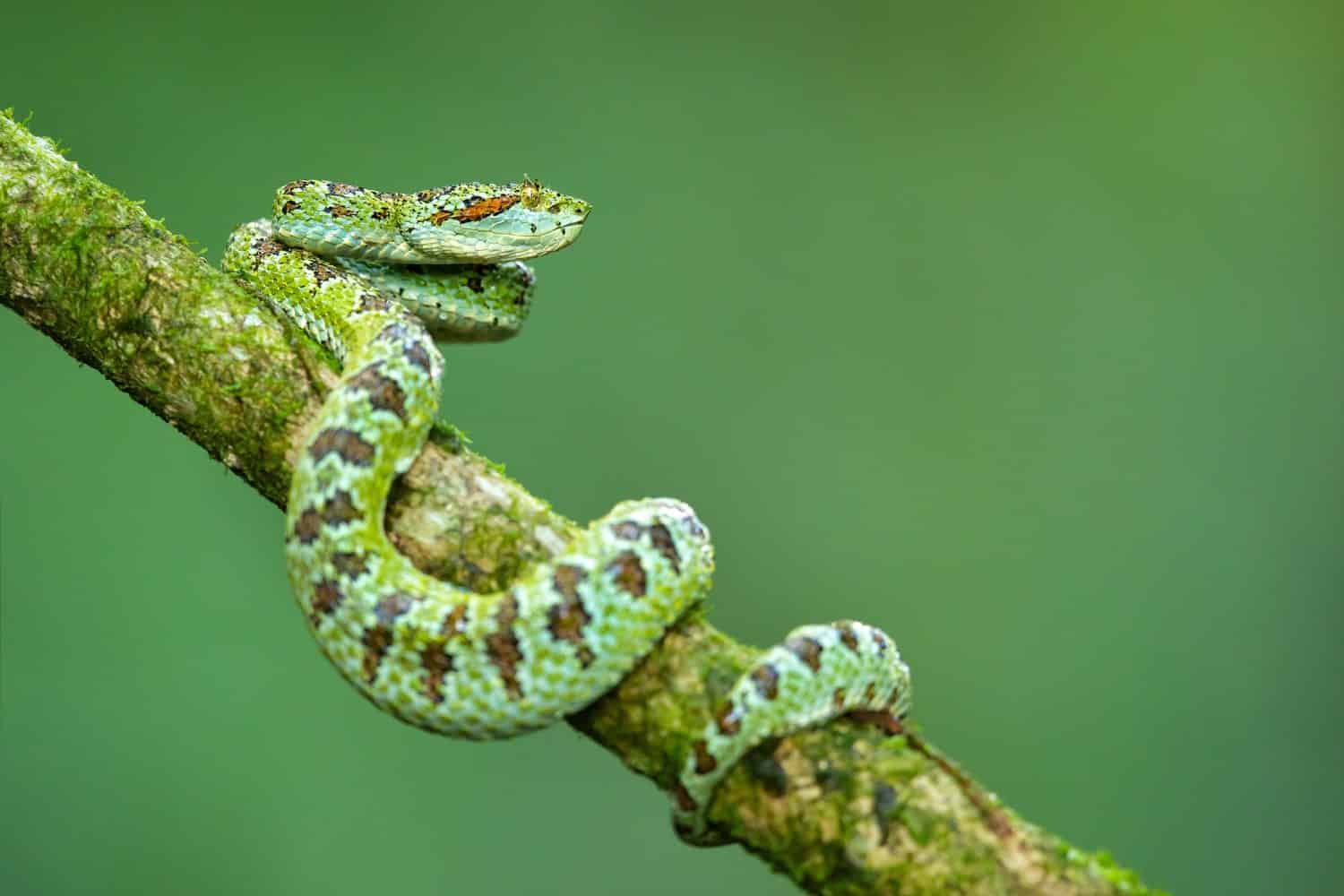
Once considered an eyelash pit viper subspecies, this little pit viper lives in the trees of Costa Rica.
©Milan Zygmunt/Shutterstock.com
Blotched palm pit vipers (Bothriechis supraciliaris) only inhabit a small region of Costa Rica. They’re usually moss green but can be reddish brown and only grow about 20 inches long. Their biggest threat is habitat loss, and researchers note a continuing decline in the number of adult snakes.
#8 Anatolian Meadow Viper
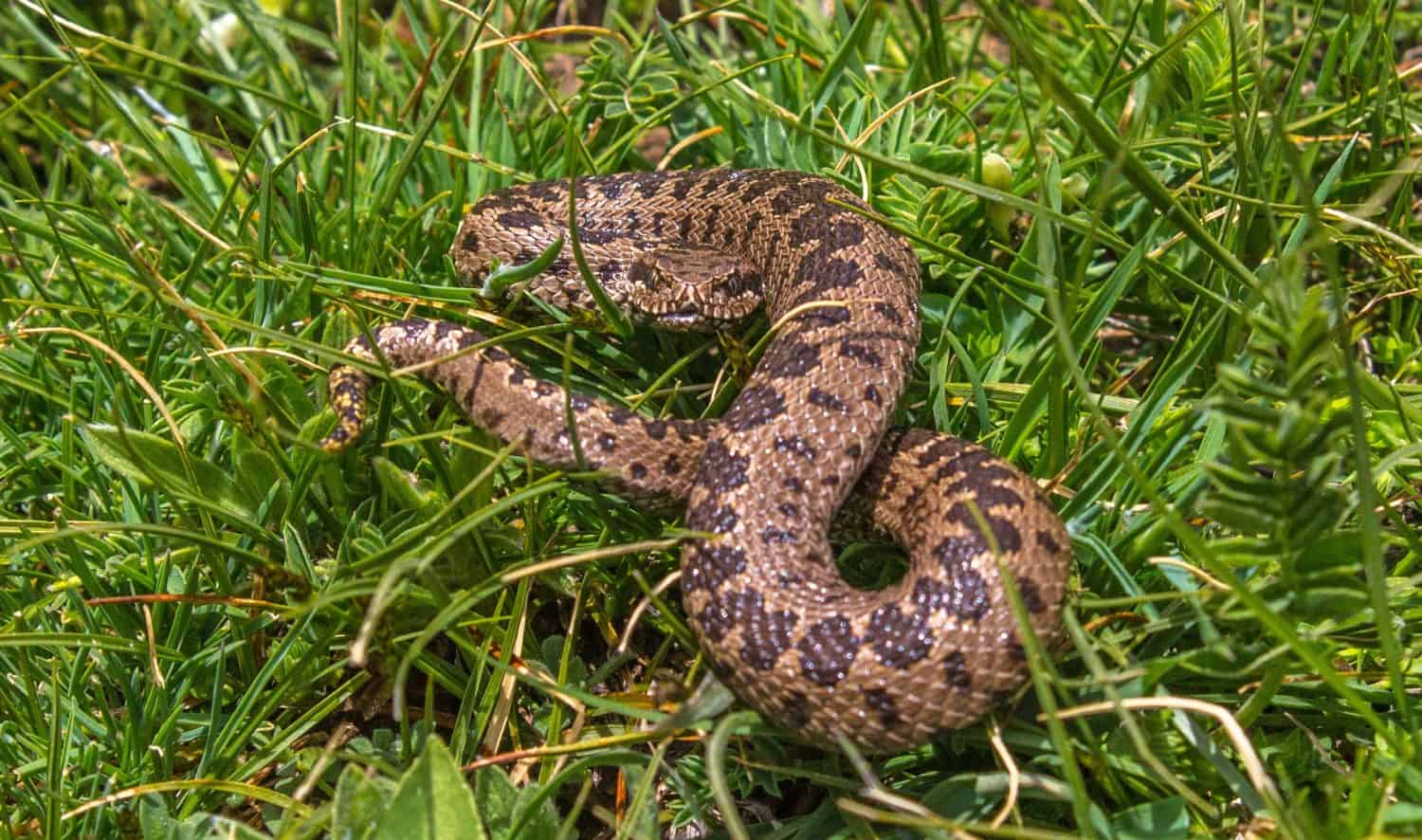
Though it looks similar to the common adder, the Anatolian meadow viper is only found in Turkey.
©Anil OGUZ/Shutterstock.com
The Anatolian meadow viper (Vipera anatolica) occurs on the Ciglikara mountain plateau in southwest Turkey. It only lives on that plateau. Known as a sky island, the Ciglikara mountain plateau is cool and comfortable for the viper, which can’t handle the hot temperatures in the surrounding lowlands.
Researchers have only found a handful of Anatolian meadow vipers — even though they discovered the vipers in 1969. Additionally, during a study in 2015-2016, researchers only found 10 individuals. So, it’s likely that the population is either very small or diminishing, making this one of the most endangered vipers.
#7 Orlov’s Viper
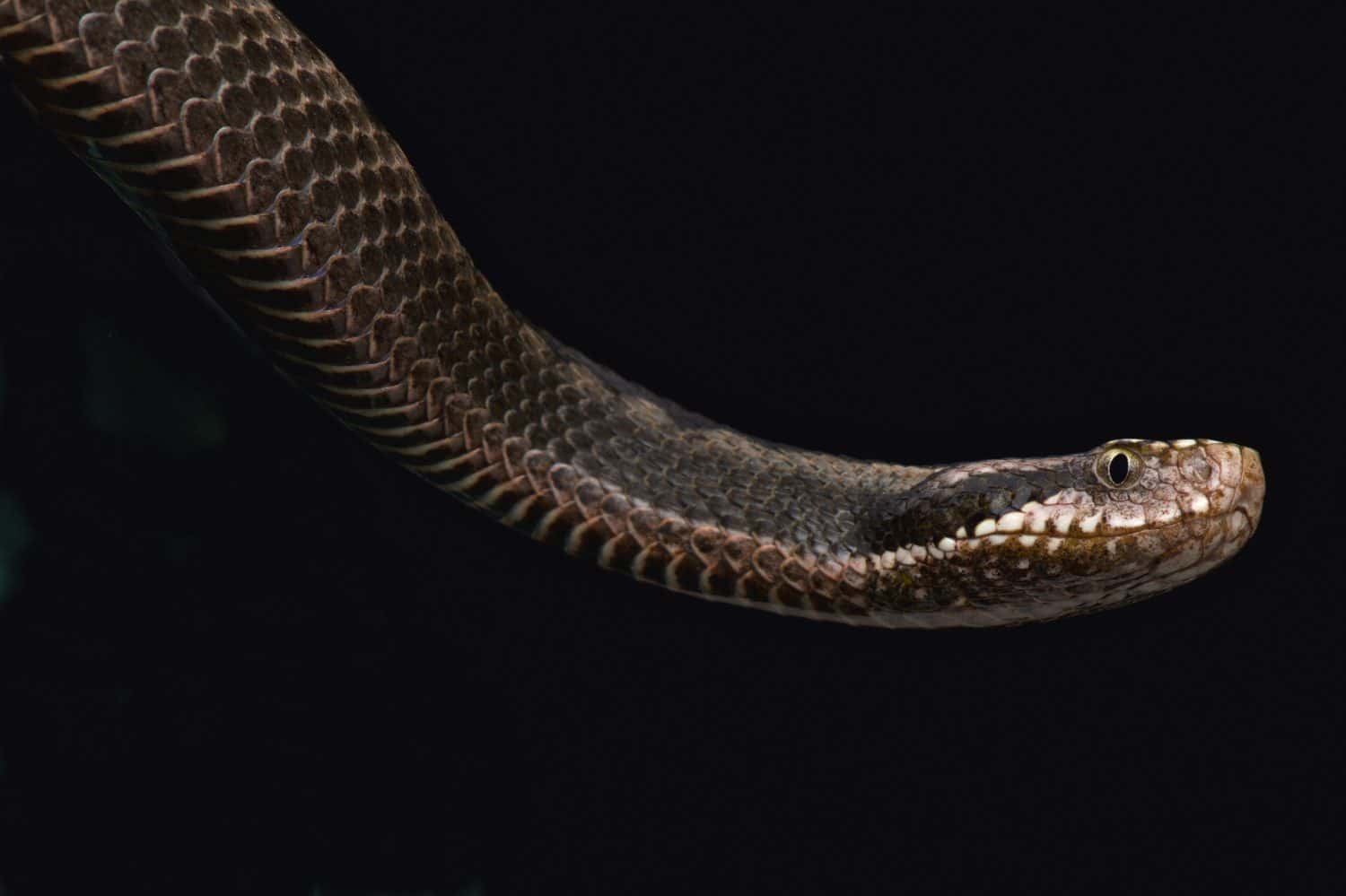
Orlov’s viper is only found along the Black Sea’s northeastern coast.
©reptiles4all/Shutterstock.com
Named after the Russian-born herpetologist Nikolai Orlov, this viper lives in a small area along the northeastern coast of the Black Sea. Although the IUCN lists it as critically endangered, it’s possible that the snake has always been rare because of its location.
#6 Kenya Montane Viper

Endemic to Mt. Kenya, these
snakes live
in some of Kenya’s last montane regions.
©Mara008, CC BY-SA 4.0 - License
Kenya montane vipers (Montatheris hindii) live high up on Mt. Kenya at 8,900 to 12,500 feet. These smallish vipers prefer clumps of grasses for cover and are very secretive. It’s possible that they aren’t endangered. They may be the best stealth practitioners on the mountain.
Like many other snakes, locals kill this viper on sight. Additionally, its populations are separated, making it more difficult for the little snakes during breeding season.
#5 McGregor’s Pit Viper
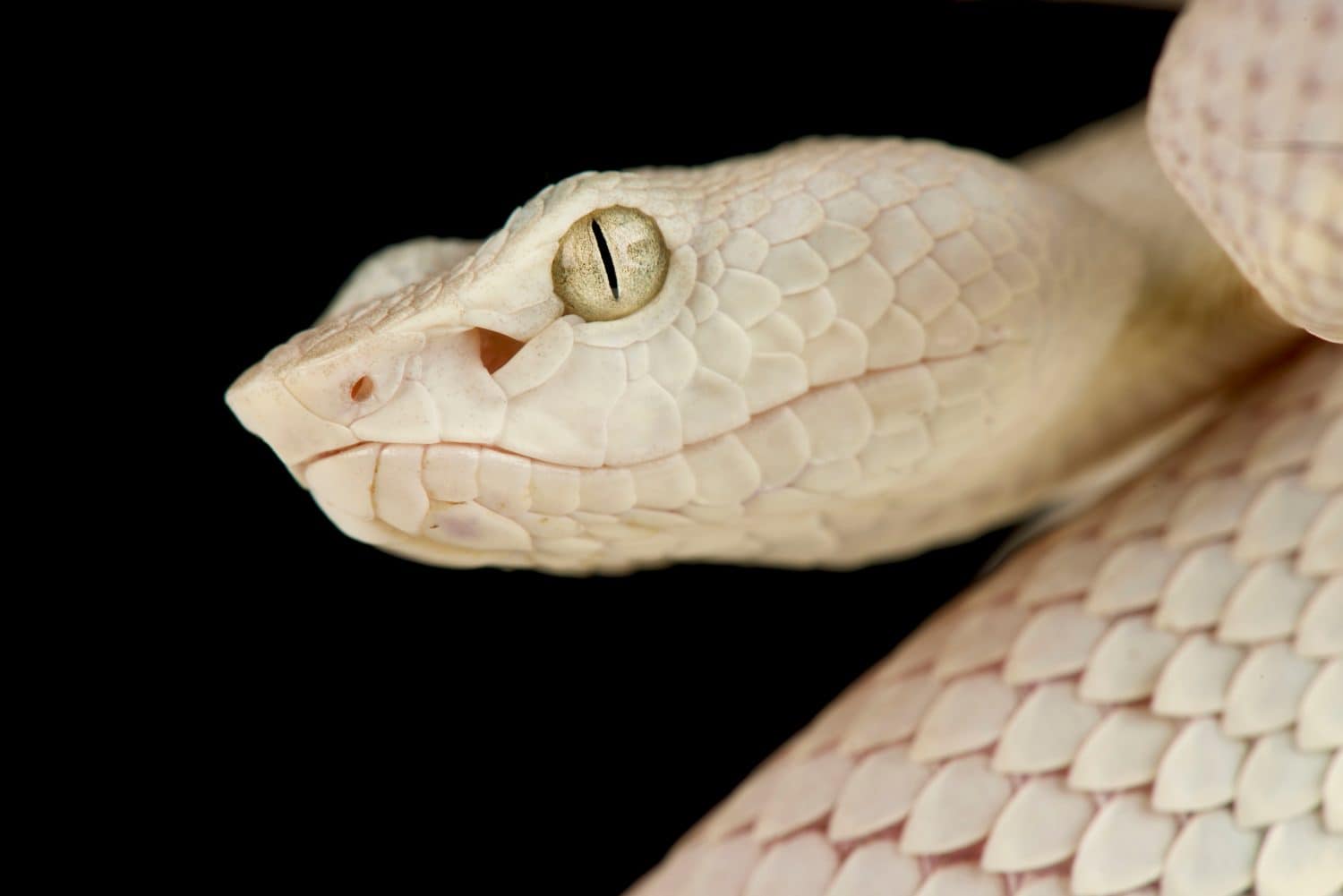
It naturally comes in several colors, and pet breeders have introduced more, including the white-blush color above.
©reptiles4all/Shutterstock.com
Named for the ornithologist who both survived its bite and collected the first type specimen, McGregor’s pit viper (Trimeresurus mcgregori) only occurs on a couple of islands in the Philippines. Habitat loss and pet trade make a formidable enemy for this fully arboreal snake, making it one of the world’s most endangered vipers.
#4 Mangshan Pit Viper
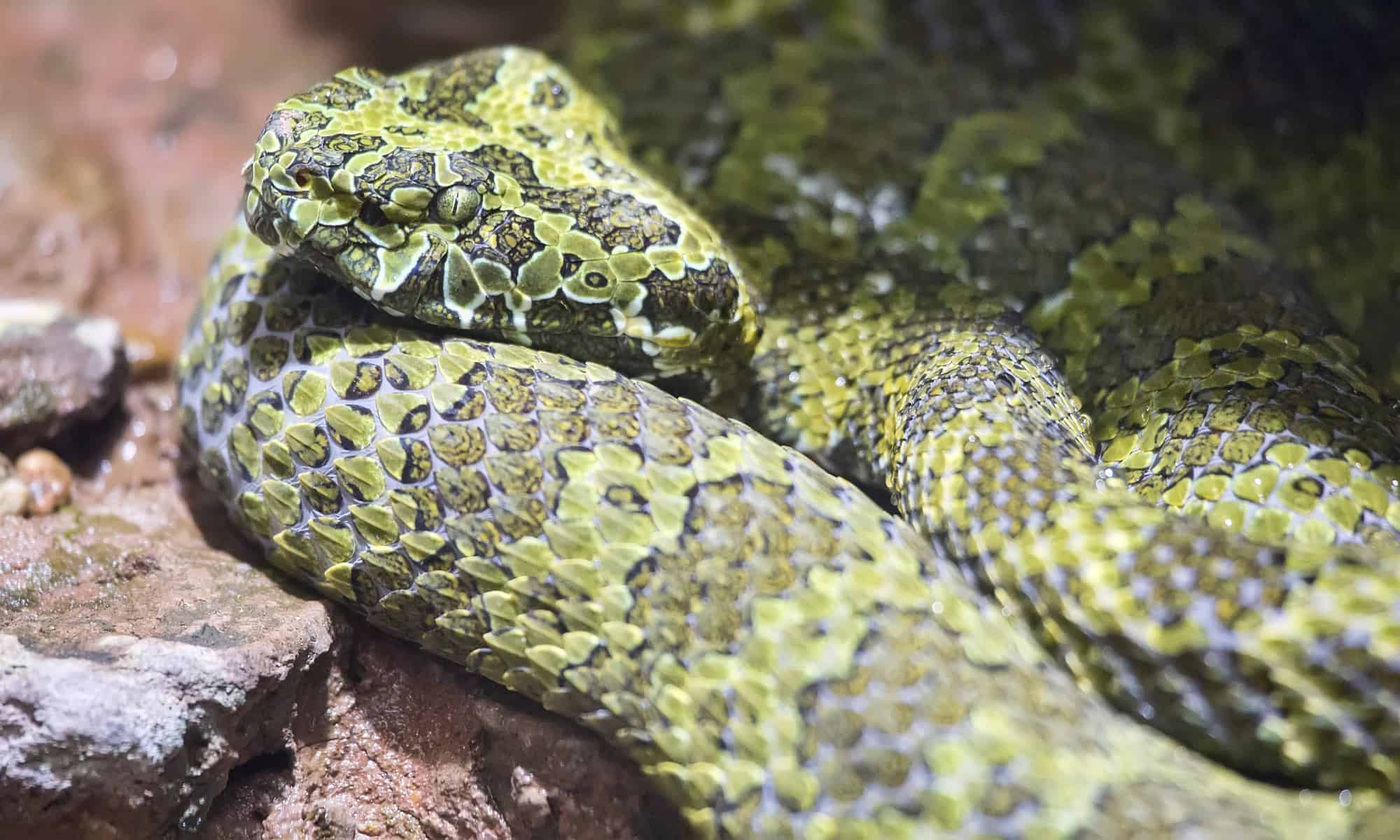
Wild populations are dwindling and there are probably fewer than 500.
©Bill Kennedy/Shutterstock.com
Present in only two Chinese provinces, the Mangshan pit viper’s (Protobothrops mangshanensis) wild population is likely less than 500. The pet trade has caused some losses, but they are also losing habitat to development and food.
#3 Alcatrazes Lancehead
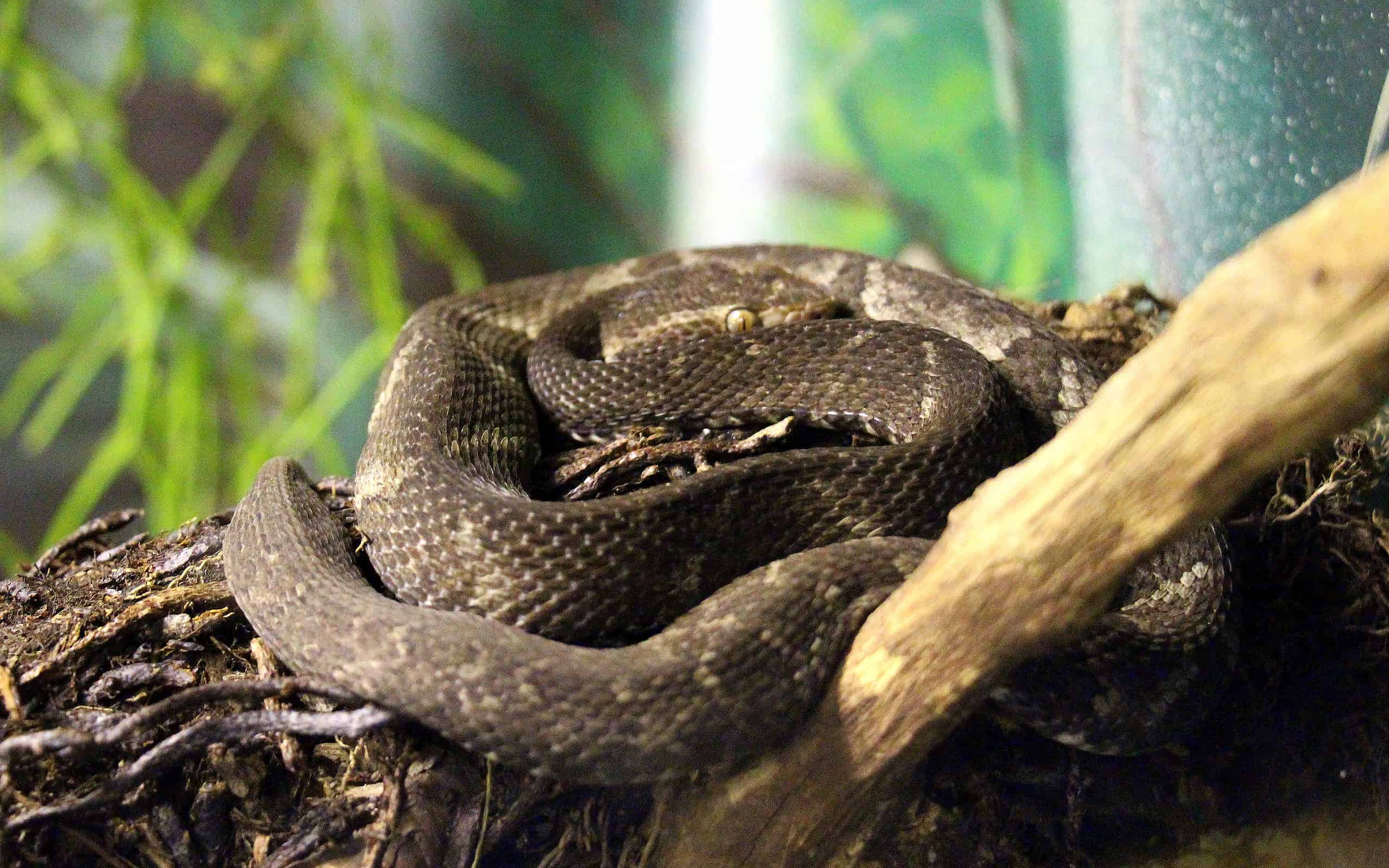
Alcatrazes Island lanceheads are small pit vipers that only grow about 19.5 inches long.
©Douglas Bete, CC BY 2.0 - License
Another island native, this one off the coast of southeastern Brazil. Until about 15,000 years ago, Alcatrazes Island was still connected to South America. At that point, they were still common lanceheads like those on the mainland. However, as with Ilha da Quemada Grande and the golden lancehead, the water rose again after the last ice age, cutting the snakes off from the mainland on an island with about three-quarters of a square mile in land.
Once isolated, nature quickly adapted the Alcatrazes Island lanceheads (Brothrops alcatraz) to the available prey: insects like centipedes and cockroaches. The snakes shrunk smaller but retained the same-sized eyes, which makes the snakes look like juveniles.
#2 Central Turkish Mountain Viper
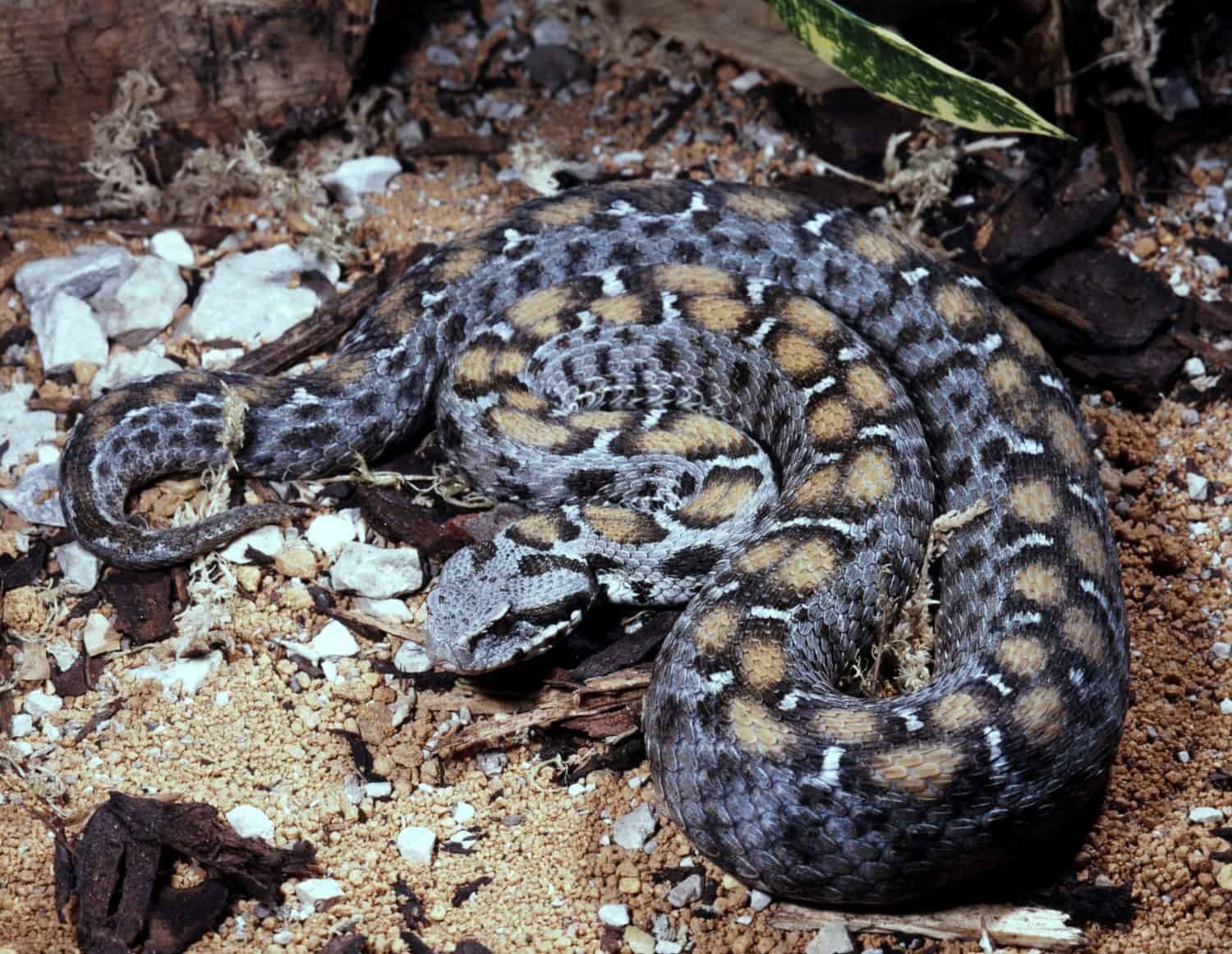
One of the most endangered vipers lives in grasslands at about 5,900 feet.
©Vladislav T. Jirousek/Shutterstock.com
The Central Turkish mountain viper (Montivipera albizona) is threatened by habitat loss and killing by shepherds. Their populations are dropping every year, with fewer adults spotted.
#1 Most Endangered Viper: Aruba Island Rattlesnake
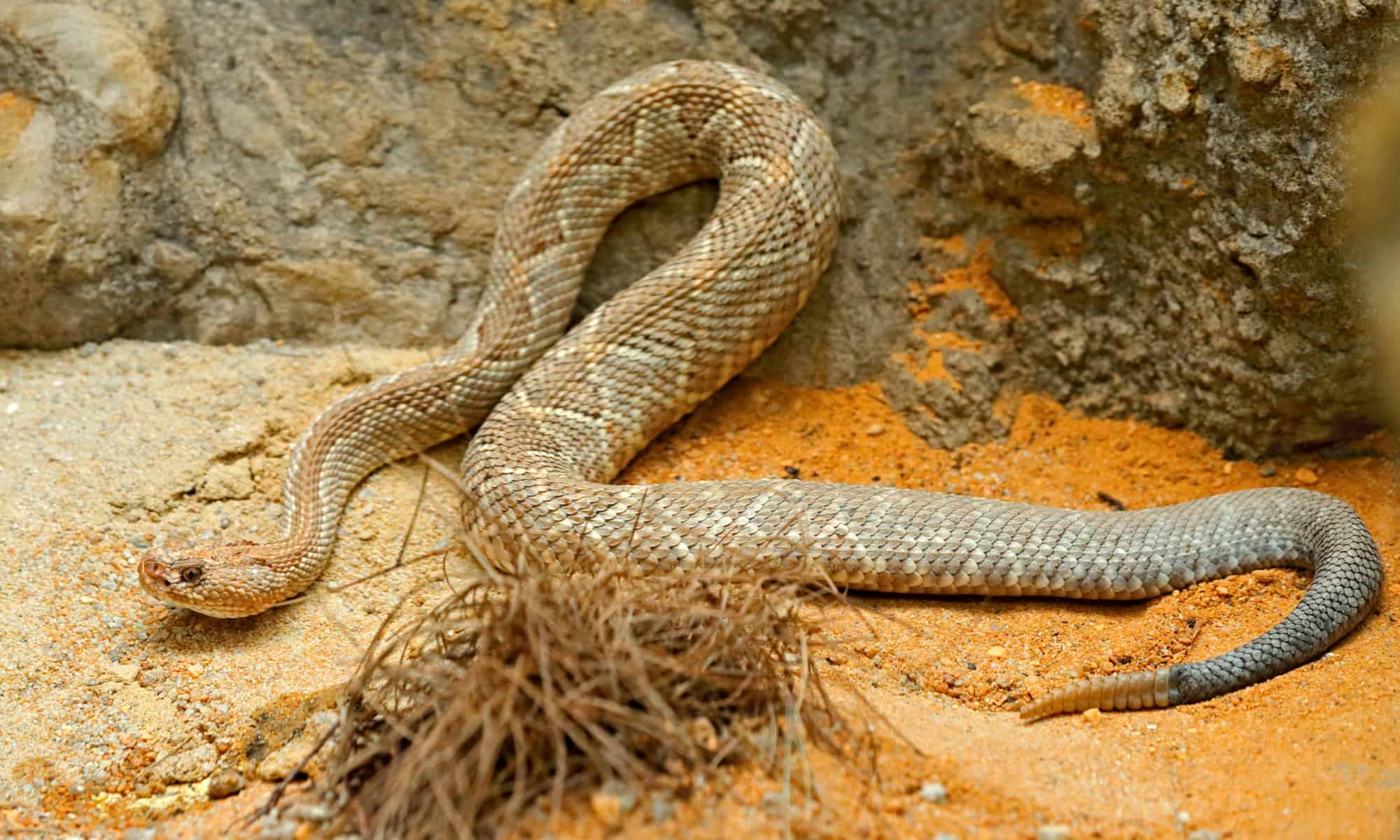
The pattern on this Aruba rattlesnake, already faint, will probably fade to nothing in another year or two.
©Ondrej Prosicky/Shutterstock.com
Although the species was previously counted among South American rattlesnake (C. durissus) subspecies, genetic research in the early 2000s changed that assessment. The Aruba Island rattlesnake(C. unicolor) may be the rarest rattlesnake in the world. Combined with persecution and lack of space, these rattlers struggle for survival. Scientists estimate approximately 250 Aruba rattlesnakes left in the wild, with some in managed populations in zoos.
| Species | Population and Threats |
|---|---|
| #1 Aruba rattlesnake | Probably less than 250 in the wild. |
| #2 Central Turkish mountain viper | Persecution by people, roads, and habitat loss |
| #3 Alcatrazes Island pit viper | Unknown; home range is less than 1 square mile. |
| #4 Mangshan pit viper | Less than 500 in the wild; pet trade collection |
| #5 McGregor’s pit viper | Relative isolation, pet trade, and habitat loss |
| #6 Kenya montane viper | Fragmented population. |
| #7 Orlov’s viper | Habitat loss and likely a small population. |
| #8 Anatolian meadow viper | Occurs in small population on a high-altitude plateau. |
| #9 Blotched Palm Pit Viper | Extremely small range; habitat loss |
| #10 Golden lancehead | Between 2,000 and 4,000 in the wild; habitat loss, goats causing prey loss. |
| #11 Lowlands hump-nosed pit viper | Unknown; fragmented population |
| #12 Tzotzil montane pit viper | Unknown number; isolated to Chiapas mountains |
| #13 Tancitaran dusky rattlesnake | Unknown; isolated to small Costa Rican area; severely fragmented population |
| #14 St. Lucia fer-de-lance | Only lives on one island with a small viper population |
| #15 Wagner’s viper | Pet trade over collection |
| #16 Darevsky’s viper | Fragmented population; cattle and livestock farming |
| #17 Southern adder | Primary threat is habitat loss through real estate development |
| #18 Black-headed bushmaster | Habitat loss and persecution |
| #19 Kenya horned viper | Habitat loss due to conversion to farming, pet trade poaching |
| #20 West African gaboon viper | Habitat loss, killing by people, poaching for pet trade |
The photo featured at the top of this post is © reptiles4all/Shutterstock.com
Discover the "Monster" Snake 5X Bigger than an Anaconda
Every day A-Z Animals sends out some of the most incredible facts in the world from our free newsletter. Want to discover the 10 most beautiful snakes in the world, a "snake island" where you're never more than 3 feet from danger, or a "monster" snake 5X larger than an anaconda? Then sign up right now and you'll start receiving our daily newsletter absolutely free.
Thank you for reading! Have some feedback for us? Contact the AZ Animals editorial team.






